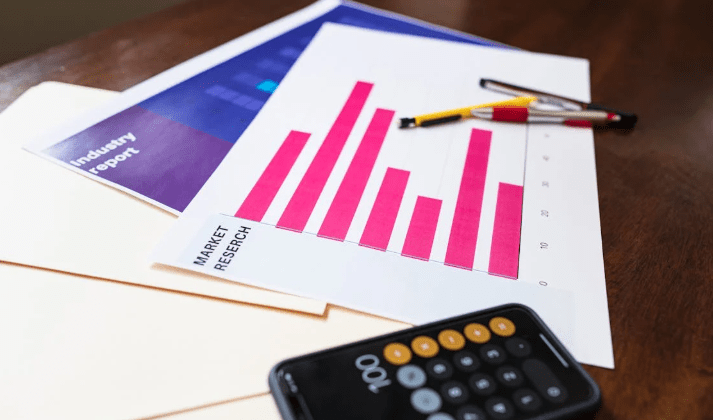From inflation to Bitcoin, charts that explain 2024

Despite a tumultuous U.S. presidential campaign and intensifying global conflicts, the economy is poised to end 2024 in a stable position. Inflation has come down substantially and economic growth remains relatively robust, particularly for the United States. But the outlook for 2025 is murky, as President-elect Donald Trump’s policy changes could affect the economy in unpredictable ways.
Banner Year for Stock Market
At the end of 2023, the S&P 500 was surging toward a new high. In January, it finally reached it, driven in part by the “Magnificent Seven” tech stocks: Alphabet, Amazon, Apple, Meta, Microsoft, Nvidia and Tesla.
As the bull market continued to run, stock market highs became commonplace.
The S&P 500 closed at record highs 57 times this year, with some especially large surges after the election, although the rally has slowed in recent weeks (more on that later).
Anticipation High for Cuts
A global cooldown in inflation and, with it, anticipation of an easing of monetary policy have also helped fuel the blockbuster stock market.
For the past couple of years, monetary tightening was the policy in nearly all major economies, as central bankers raised rates to tame surging inflation. This past summer and fall, many advanced economies began to cut rates for the first time since the pandemic.
In September, the Fed followed suit with a half-point rate reduction, an unusually large move and a clear signal that it was turning its attention from combating inflation to protecting the job market.
A Rise in Uncertainty
The Fed’s recent moves, however, have made clear that inflation risks are back. On Dec. 18, the Fed announced its third rate cut of the year, a quarter-point reduction as expected. But Fed policymakers dialed down expectations for cuts next year, suggesting that they would make just two rate cuts by the end of 2025.
The announcement, along with the range of uncertainty in the Fed’s forecasts (one Fed official expects no cuts at all next year, while another expects five), sent markets tumbling.
A Less-Optimistic Story
On the heels of the Fed news, the yield on a 10-year Treasury note jumped to its highest level since May.
Treasury yields also spiked in September and early November, even after the Fed first started cutting rates and stocks were soaring after Trump’s victory. The average rate on a 30-year mortgage, which tends to trend in the same direction, also went up. This may seem paradoxical, given the Fed’s rate cuts.
But investors in assets such as 10-year Treasurys are thinking about what’s going to happen to growth and inflation over months or years. Higher yields could indicate that investors are anticipating higher inflation in the future for longer-term investments.
Some of the same factors that have fueled a Trump rally in stocks — enthusiasm for his policies of tax cuts, deregulation, stimulative government spending and tariffs — could be cause for concern among bond investors. Such investors may worry that Trump’s economic plans would increase the federal deficit and, with it, inflation.
Trump’s Tariff Threats
During the U.S. presidential campaign season, both candidates expressed support for tariffs as an essential tool for protecting American manufacturers from Chinese and other global competitors.
A few weeks after winning the election, Trump announced that on his first day in office he would impose tariffs on all products coming into the United States from Canada, Mexico and China. During his first term, Trump imposed tariffs on some imports, particularly those coming from China, causing China’s share of imports to fall.
Sweeping tariffs could start a trade war if countries retaliated with tariffs of their own. Studies have shown that the cost of tariffs are often passed on to American consumers, leading to higher inflation.
A Divided Economic Outlook
Democrats and Republicans see the potential effects of Trump’s policies differently. Consumer sentiment among Republicans soared after Election Day, according to the University of Michigan’s consumer sentiment survey. For Democrats, it plummeted.
“Throughout this month’s interviews, Democrats voiced concerns that anticipated policy changes, particularly tariff hikes, would lead to a resurgence in inflation,” Joanne W. Hsu, who runs the University of Michigan Survey, said in a statement.
“Republicans disagreed; they expect the next president will usher in an immense slowdown in inflation,” she said.
A Crypto Resurgence
The cryptocurrency boom has highly correlated with Trump’s victory. On the campaign trail, Trump promised to make the United States the “crypto capital of the planet”; the day after he won, bitcoin surged to a record.
Then, this past month, the price of a single bitcoin rose to $100,000 for the first time, an astonishing turnaround after its price dropped below $17,000 in 2022 after the collapse of the FTX crypto exchange.
But, like the stock market, bitcoin is volatile, perhaps making it more of a speculative asset than a currency. After hitting a high above $108,000 last week, its price has dropped below $100,000.
“It’s not a competitor for the dollar,” Jerome Powell, the Fed chair, said this past month. “It’s really a competitor for gold.”
AI Fueled Astronomical Growth
Nvidia, which this year briefly overtook Apple and Microsoft to become the world’s most valuable company, also stands to gain from the crypto boom. Its chips, used in video games and to train artificial intelligence models, are also used for mining cryptocurrency.
Of the “Magnificent Seven” stocks, Nvidia has grown the most, with shares soaring more than 800% since the start of 2023. In another indicator of the AI surge, Broadcom, another chipmaker, hit $1 trillion in market value this past month.
Nvidia’s shares have fallen in recent weeks after Chinese regulators opened an antitrust investigation into the chipmaker.
The Future of Mergers
In 2023, global Mergers & Acquisitions fell to a 10-year low, reflecting concerns about the global economy and geopolitical tensions, as well as uncertainty before elections in several countries. This year, deal-making made a modest comeback.
In the United States, corporate deal-makers are hopeful that a second Trump administration will be good for M&A, especially as Trump’s pick for Federal Trade Commission head, Andrew Ferguson, is expected to go easier on mergers than the agency’s current chief, Lina Khan.
But Ferguson, like Khan, has vowed to crack down on Big Tech. And interest rates could stay high, as uncertainty over Trump’s economic proposals persists.
Is the era of megamergers over? Or will deal-making come back with a vengeance? That might be the data point Wall Street is most eager to watch in the year ahead.












